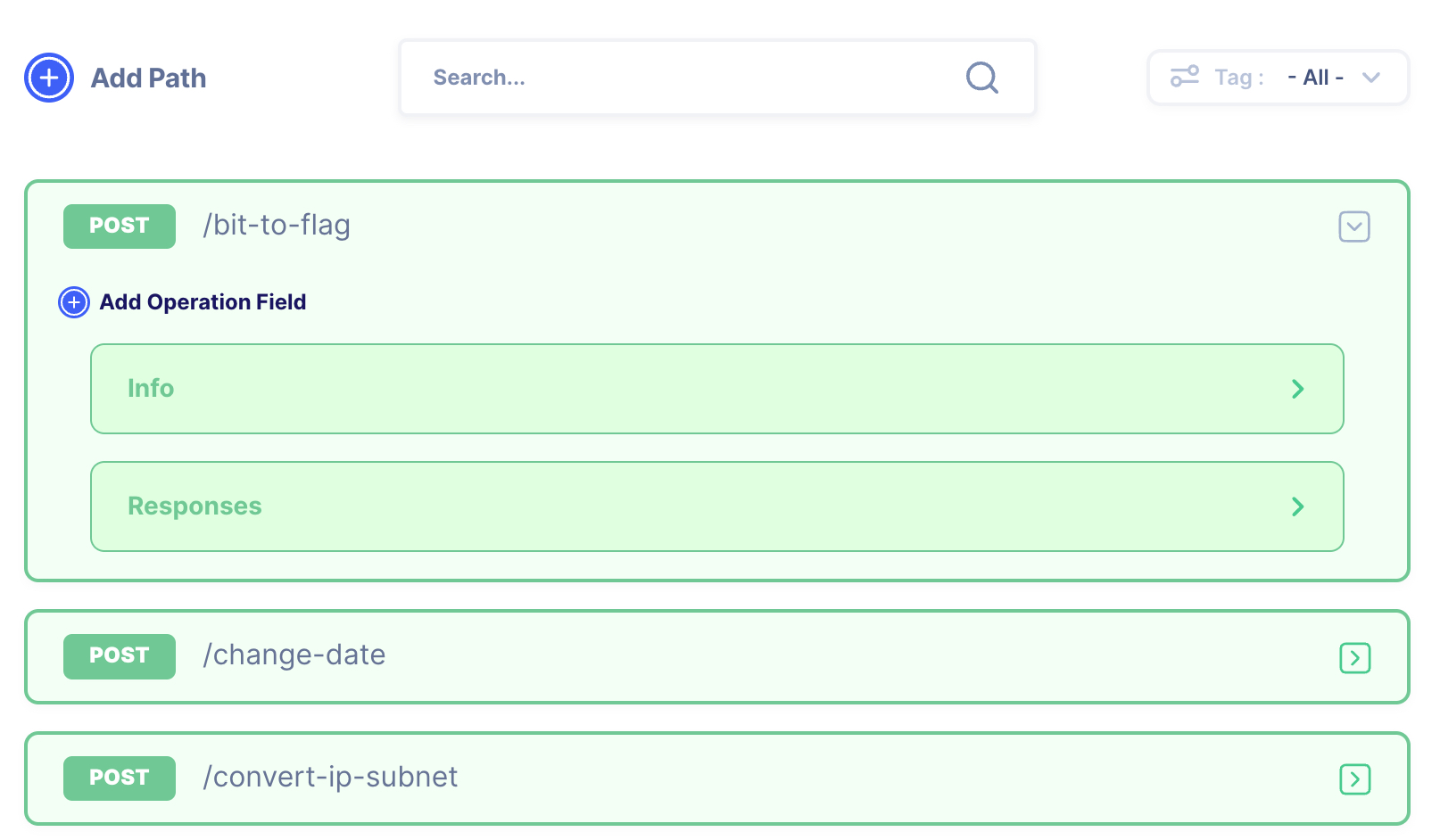Path(s) in API
List of configured paths

The paths allows you to define various options and attributes for each path. Here are some of the common options and components that can be used within the paths object:
HTTP Methods (Operations):
You can define various HTTP methods (operations) such as
get,post,put,delete, etc., within each path. Each method describes a specific action that can be performed on that path.paths:
/users:
get:
summary: Get a list of users
# ...
post:
summary: Create a new user
# ...
Path Parameters:
Path parameters allow you to define dynamic parts of the URL path. They are specified using curly braces
{}and are used to capture values from the request URL.paths:
/users/{userId}:
get:
summary: Get user by ID
parameters:
- name: userId
in: path
required: true
description: ID of the user
schema:
type: integer
# ...
Query Parameters:
Query parameters are used for filtering or modifying the request. They are typically added to the end of the URL after a question mark
?.paths:
/users:
get:
summary: Get a list of users
parameters:
- name: page
in: query
description: Page number for pagination
schema:
type: integer
# ...
Request and Response Bodies:
You can define request and response bodies for each operation. This includes specifying the expected format, structure, and content type.
paths:
/users:
post:
summary: Create a new user
requestBody:
description: User information to be added
required: true
content:
application/json:
schema:
$ref: '#/components/schemas/User'
responses:
'201':
description: User created successfully
# ...
Headers:
You can specify headers expected in the request or included in the response.
paths:
/users:
get:
summary: Get a list of users
parameters:
- name: Authorization
in: header
description: API key for authorization
required: true
schema:
type: string
# ...
Security:
You can associate security requirements with specific paths or operations, specifying how authentication and authorization should be handled.
paths:
/users:
get:
summary: Get a list of users
security:
- apiKey: []
# ...
These are just a few examples of the options available within the paths object in OpenAPI. The OpenAPI Specification provides a comprehensive set of features to describe different aspects of your API, allowing for clear documentation and consistent communication of API capabilities. The paths section serves as a central place to define the available routes, operations, and associated details for your API.
Reference: https://swagger.io/docs/specification/paths-and-operations/